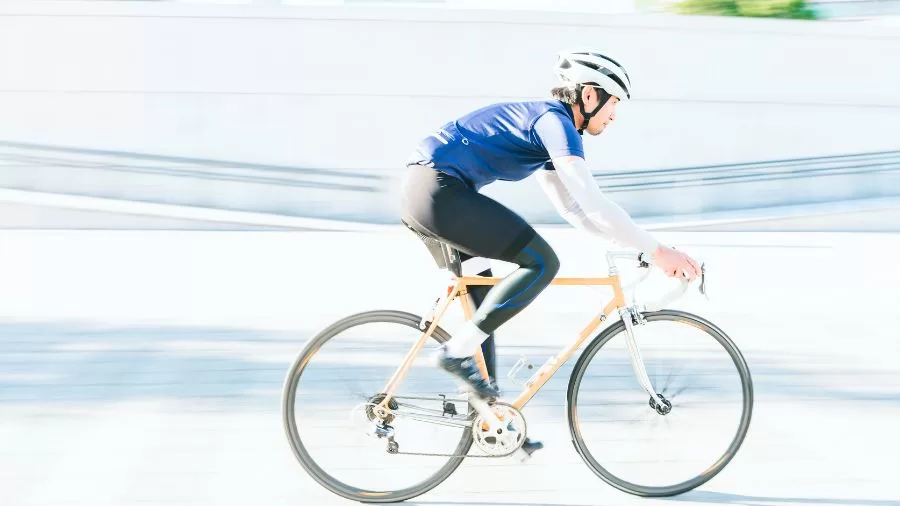Lifestyle
Improving Infrastructure for Cyclists in Montana: 5 Ways to Make Streets More Bicycle-Friendly

Today, many people have become conscious of the environment and want to make an effort to change their habits and ensure a greener future for all. The change can start with something as small as reusing plastic bags or choosing environmentally-friendly packages that are available.
The same goes for transport—many commuters are opting for eco-friendly transport such as bicycles or e-scooters. The only problem is that many states do not have the suitable infrastructure that’s intended for cyclists and helps keep them safe.
Montana’s expansive landscapes and scenic routes make it an incredible place for cycling enthusiasts. Cycling offers numerous benefits for health, the environment, and transportation but despite its growing popularity, cycling in Montana comes with significant risks.
Many of the state’s streets and roads are not designed with cyclists in mind, creating challenges for safe and accessible biking. To encourage more people to choose cycling and protect those who already do, improving Montana’s infrastructure is essential.
In this article, we’ll explore why cyclists face dangers on Montana’s roads, outline specific improvements that can make cycling safer and more accessible, and provide a roadmap for creating bicycle-friendly communities across the state.
Why cyclist face risks
Cyclists in Montana face numerous hazards, many of which arise as a result of inadequate infrastructure and the general design of the state’s roadways. Other states in the US also face the same issue and in 2022 it was estimated that 1,360 cyclists died as a result of an accident.
It’s also predicted that this number has gone up in the last couple of years. When it comes to Montana, there are several problems that cyclists encounter and that prevent them from riding their bikes risk-free.
Many roads in Montana lack designated bike lanes, forcing cyclists to share space with motor vehicles. This increases the risk of collisions, especially on high-speed or narrow roads.
Also, the increased frequency of distracted driving is a serious threat to cyclists. Texting, phone calls, and other distractions reduce drivers’ awareness, making it harder for them to spot cyclists.
Without significant changes to Montana’s infrastructure, these dangers will continue to discourage potential cyclists and put current riders at risk. Addressing these issues starts with redesigning roads to prioritize safety and accessibility.
How Montana can improve roads for cyclists
Creating a safer and more welcoming environment for cyclists requires thoughtful planning and investment. Making a state or a city bicycle-friendly doesn’t happen overnight and it requires a lot of effort from different parties. There also needs to be a clear strategy in place that will prioritize the safety of cyclists.
Build dedicated bike lanes
Currently, one of the main problems is that Montana doesn’t have dedicated bike lanes which means cyclists have to use either car lanes or pedestrian lanes. The first option means that they’re putting themselves at risk whereas the other option means they’re putting others in danger.
One of the most effective ways to improve cyclist safety therefore would be adding dedicated bike lanes to roads. These lanes provide a separate space for cyclists, reducing the likelihood of collisions with motor vehicles. In urban areas like Missoula or Bozeman, protected bike lanes—which use physical barriers such as curbs or bollards—can offer even greater security.
In rural regions, wide shoulders can serve as bike lanes, giving cyclists room to ride safely without encroaching on traffic lanes. Expanding the network of bike paths and connecting existing trails would also enhance access and mobility for cyclists statewide.
Set up a resource hub
Apart from having dedicated lanes in place, it’s also important that cyclists know that they’re safe and protected in case of an accident. Montana communities should encourage more people to pick up cycling and they can do so by setting up a resource hub. This can be an online hub that anyone interested in the subject can access and get more information.
For instance, the resource hub can include recommended bike trails around Montana and a map of bike repair shops nearby.
Additionally, it’d be a good idea to also include a list of legal resources or bicycle accident law firms that cyclists can turn to when in need of legal counsel if they get into an accident or cause an accident, for instance.
Improve road maintenance
Another important aspect of cyclists’ safety is regular road maintenance. Maintaining smooth and debris-free roads is crucial for cyclist safety. Regular maintenance schedules should include clearing bike lanes, fixing potholes, and addressing surface irregularities. Special attention should be paid to rural roads where maintenance delays are common.
Montana can also consider adopting cyclist-friendly materials, such as skid-resistant pavement, to improve traction and reduce the risk of accidents during wet or icy conditions.
Enhance signage and lighting
Finally, better signage and lighting can significantly improve visibility and awareness for both cyclists and drivers. Installing clear signs to indicate shared roadways or bike lanes can help drivers anticipate the presence of cyclists.
Additionally, adding reflective markers and increasing street lighting can improve visibility in low-light conditions, reducing nighttime accidents. Although you might think that nighttime is maybe safer as there are not that many vehicles, it’s actually the opposite.
If we’re talking about cars, most fatal accidents happen at nighttime, likely due to driver fatigue or the fact that they get too relaxed on the road as there’s no traffic.
Education campaigns can complement these measures, teaching drivers to recognize and respect cyclist-specific signs and signals.
Key takeaways
In today’s world, it is absolutely necessary to take up some healthy habits and try to protect the planet while it’s still possible. Cycling has the potential to transform Montana’s transportation landscape, offering a sustainable, healthy, and enjoyable way to travel.
However, the current state of infrastructure presents significant challenges to safe and accessible cycling. It’s important to ensure that there are dedicated bike lanes and that these lanes are protected from vehicle impact whenever possible.
Investing in cyclist safety not only benefits riders but also contributes to broader goals like reducing traffic congestion, improving public health, and minimizing environmental impact. These changes need to be prioritized so that Montana can finally create a transportation system that supports cyclists and enriches communities statewide.
Also, with a detailed and easily-accessible resource hub, more people would also be encouraged to turn to cycling and cycle to work instead of always relying on their cars.
Hopefully, once several of these adjustments have been implemented, the residents of Montana will be able to see some actual changes and cyclists won’t have to be afraid of doing their favorite activity.




















































